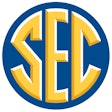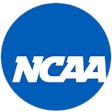|
Copyright 2013 Gannett Company, Inc. All Rights Reserved USA TODAY |
|
September 6, 2013 Friday
First EDITION |
|
SPORTS; Pg. 5C
|
|
616 words
|
| W.Va. hits bumps in move to Big 12; Tougher competition, geography working against Mountaineers |
|
Dan Wolken, @DanWolken, USA TODAY Sports
|
|
West Virginia's escape from a crumbling Big East was perhaps the most dramatic in recent conference realignment, as school officials scrambled, U.S. senators publicly squabbled and a race with Louisville for one spot in the Big 12 played out behind the scenes over a frantic week in late October 2011. Ultimately, the Mountaineers were able to leverage their nationally relevant football brand into a Big 12 invitation, launching them into a more lucrative and stable conference. But as West Virginia begins its second season of Big 12 play, expectations have rarely been lower for the Mountaineers' marquee sports. Its football program, which travels to No. 15 Oklahoma as a big underdog Saturday, appears to be rebuilding. Its men's basketball team, which made the NCAA Final Four in 2010, finished eighth in the 10-team league last season and will be picked toward the bottom again. But West Virginia athletics director Oliver Luck declined to blame travel challenges or opponent unfamiliarity with the downturn and said his department is simply in the middle of a race to meet the standards of a different conference. "You have some things that may have taken our kids some time to adjust to, but I've told my coaches -- and I'll apply it myself as well -- that we won't use novelty or travel as an excuse," Luck told USA TODAY Sports in a phone interview this week. "We still need to compete. The Big East was strong, but we're finding much tougher competition, and we have to adjust to that." West Virginia's experience is not unusual among schools that have made recent conference transitions. Aside from Texas A&M, which unexpectedly shook up the Southeastern Conference last season, newcomers in the Pac-12 (Utah and Colorado), Big 12 (TCU) and SEC (Missouri) all have had difficulties on the football field. The difference for the Mountaineers is that they are extreme geographic outliers in their league, which makes travel more difficult for sports such as basketball and limits how far some fans can travel for football. The closest Big 12 campus to Morgantown is Iowa State, which is 870 miles away. Though the Big 12 office made schedule adjustments to help with midweek road travel in basketball, it's not as convenient as when the school was in the Big East, in which 11 of the other 15 schools were within a 500-mile radius. But with no immediate plans for the Big 12 to expand again, Luck said the geographic inconveniences are balanced out by the commonality West Virginia has in the Big 12 as opposed to the core of urban schools that made up the Big East. "West Virginia is a flagship school of a relatively small state, and a lot of our students come from small, rural towns," Luck said. "If you go to Iowa State, both Kansas schools, both Oklahoma schools and Texas Tech ... I think that across the board folks would say we're at home in this conference." TCU football coach Gary Patterson, whose team also had a difficult season while transitioning to the Big12, said it would take a full cycle of playing everyone in the league at home and on the road to have a better idea of where the new programs stack up. Though Luck said he agreed with that theory, especially when it comes to factors such as wind at Texas Tech that you don't face at Cincinnati, most of the adjustment comes down to facing bigger, stronger and faster teams week in and week out. "We're happy to be in the Big 12, excited about being able to travel to all the different venues," Mountaineers coach Dana Holgorsen said at his weekly news conference. "We got a lot out of that last year, and it starts now in Week 2. I don't know if that's good or bad, but we're going to prepare like we would any other game." |
|
September 6, 2013
|
Terms and Conditions Privacy Policy



































